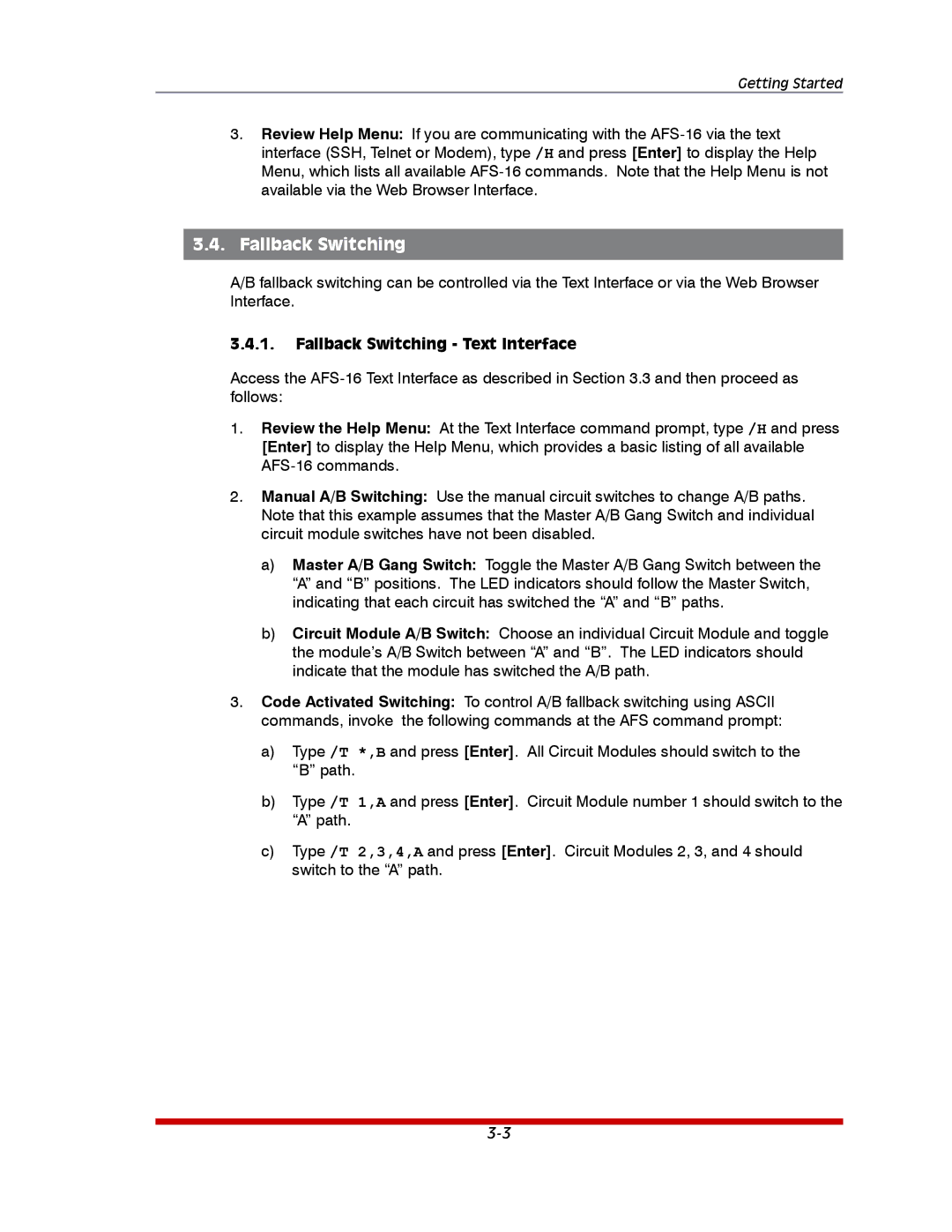
Getting Started
3.Review Help Menu: If you are communicating with the
3.4.Fallback Switching
A/B fallback switching can be controlled via the Text Interface or via the Web Browser Interface.
3.4.1.Fallback Switching - Text Interface
Access the
1.Review the Help Menu: At the Text Interface command prompt, type /H and press [Enter] to display the Help Menu, which provides a basic listing of all available
2.Manual A/B Switching: Use the manual circuit switches to change A/B paths. Note that this example assumes that the Master A/B Gang Switch and individual circuit module switches have not been disabled.
a)Master A/B Gang Switch: Toggle the Master A/B Gang Switch between the “A” and “B” positions. The LED indicators should follow the Master Switch, indicating that each circuit has switched the “A” and “B” paths.
b)Circuit Module A/B Switch: Choose an individual Circuit Module and toggle the module’s A/B Switch between “A” and “B”. The LED indicators should indicate that the module has switched the A/B path.
3.Code Activated Switching: To control A/B fallback switching using ASCII commands, invoke the following commands at the AFS command prompt:
a)Type /T *,B and press [Enter]. All Circuit Modules should switch to the “B” path.
b)Type /T 1,A and press [Enter]. Circuit Module number 1 should switch to the “A” path.
c)Type /T 2,3,4,A and press [Enter]. Circuit Modules 2, 3, and 4 should switch to the “A” path.
